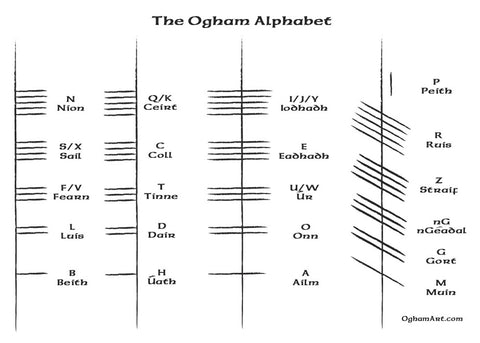Wren • June 10 to July 7 • Celtic Animal Astrology
WREN
▪️ June 10 to July 7
▪️ Resourcefulness, Quick-Thinking, Freedom
Celtic Animal Astrology is an ancient system rooted in Druidic traditions, where the natural world and animal symbolism were deeply revered. It connects individuals to specific animals based on their birth dates, offering spiritual insight and guidance. Each animal embodies qualities believed to influence personality, behavior, and destiny. This astrology emphasizes harmony with nature, encouraging self-awareness and personal growth through the traits of the associated creature. It reflects the Celts’ profound respect for the earth and its creatures.
In the Ogham Art Celtic Animal Astrology Series, the interlocking knots of each animal are brought to life with the bold palette of the Book of Kells and a subtle watermark of the intricate spirals of the Newgrange entrance stone.
▪️ Presented in a brilliant hue of colors on card stock, matted in a black wood frame (includes glass, open-front box, black backing with easel and installed hanger)
▪️ Outer dimensions 5.63"W x 7.63"L
▪️ Includes a descriptive label on the back of the mat and frame along with a 4x6 card explaining Celtic Animal Astrology
Click HERE for the entire collection of all 13 animals.
U.S. delivery only. Ships within 1-3 business days. USPS shipping times are in addition to this handling period.
For international delivery to Australia, Canada and Ireland, visit OghamArt.Etsy.com.
Click below for your corresponding Celtic Tree Astrology sign of Oak:
Here is a brief summary of the Ogham alphabet. Stay tuned for more detailed posts in the days to come. Sign up below for the Ogham Art Newsletter to receive email notifications about new postings, blogs, products and events.
Sláinte,
Colleen & Chris
Ogham is the earliest written form of Primitive Irish, the oldest of the Gaelic languages. Ogham was first used in Ireland and parts of England, Scotland and Wales between the 2nd and 6th centuries. Though its actual origins remain a mystery today, it is believed the Celts desired a cryptic alphabet that could not be deciphered by Roman Britain.


Represented as a series of perpendicular and intersecting lines, this ancient script is thought to be influenced by the Latin alphabet using 20 characters. It is most commonly written vertically and is read from bottom to top. When presented horizontally, it is read from left to right.
















